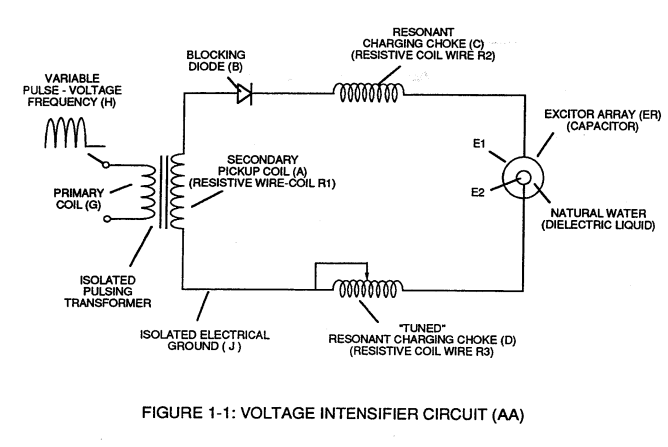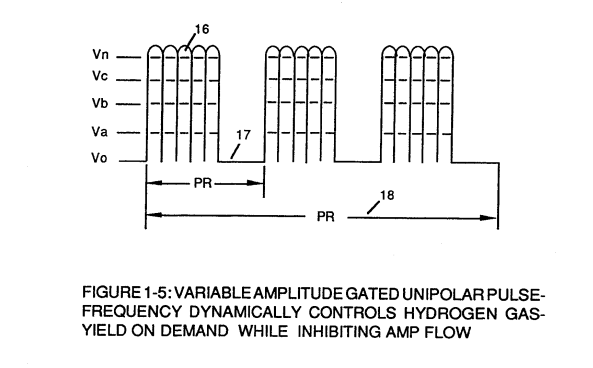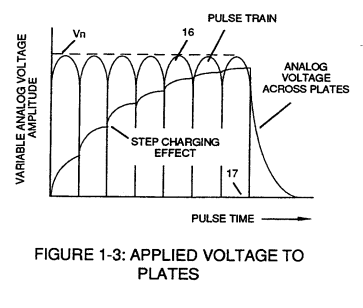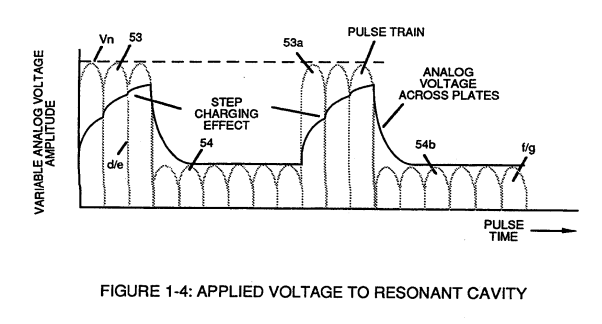LC Voltage
The voltage across the inductor (C) or capacitor (ER) is greater than the applied voltage (H).
At frequency close to resonance, the voltage across the individual components is higher than the applied
voltage (H),
and, at resonant frequency, the voltage VT across both the inductor and the capacitor are theoretically infinite.
However, physical constraints of components and circuit interaction prevents the voltage from reaching infinity.
The voltage (VL) across the inductor (C) is given by the equation (Eq 6)
The voltage (VC) across the capacitor is given by (Eq 7)
During resonant interaction, the incoming unipolar pulse-train (H) of Figure (1-1) as to Figure (1-5) produces a step-charging voltage-effect across Excitor-Array (ER), as illustrated in Figure (1-3) and Figure (1-4).
|
Figure (1-1) |
Figure (1-5) |
|
Figure (1-3) |
Figure (1-4) |
Voltage intensity increases from zero 'ground-state' to a high positive voltage potential in an progressive function.
Once the voltage-pulse is terminated or switched-off, voltage potential returns to "ground-state" or near ground-state, to start the voltage deflection process over again.
Voltage intensity or level across Excitor-Array (ER) can exceed 20,000 volts due to circuit (AA) interaction and is directly related to pulse-train (H) variable amplitude input.






